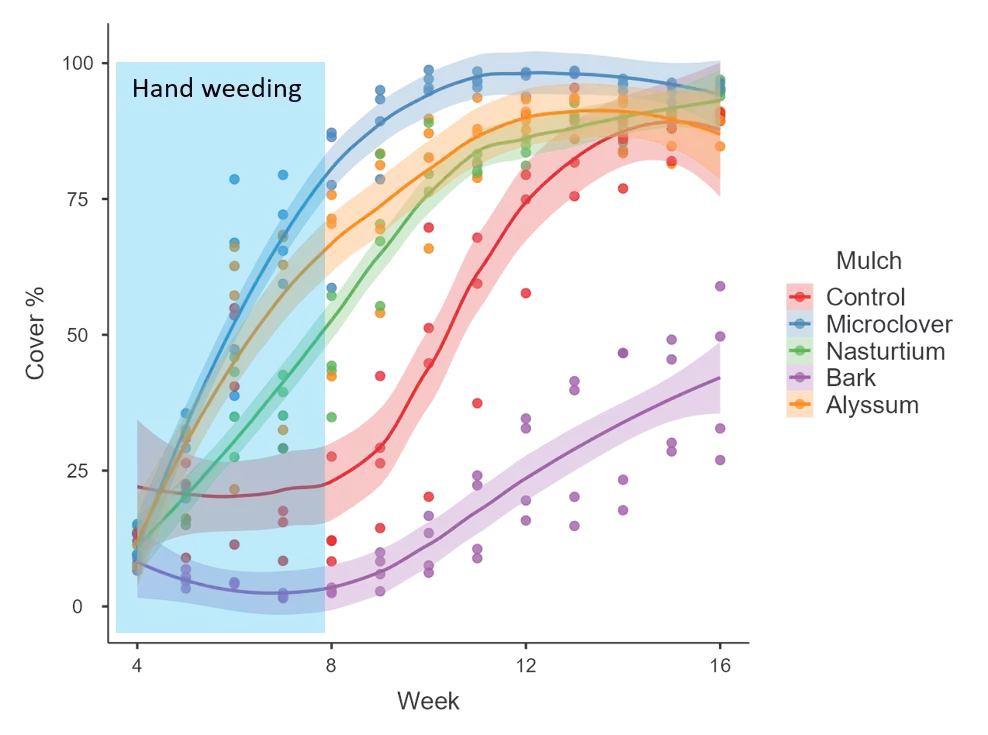

Microclover living mulch established rapidly in orchard rows to inhibit weeds and retain soil moisture
Sustainable Agriculture Student Research Project
Impact of in-row living mulches on tree growth, soil moisture and weed management in an organic high-intensity apple orchardFrancisca Weeks, Department of Sustainable Agriculture, 2024 |
Introduction
- Effective orchard floor management:
- Conserves water to improve drought resilience;
- Inhibits weeds to reduce competition with fruit trees; and
- Maintains soil cover to prevent erosion.
- Living mulches are cover crops undersown with a cash crop to serve as a mulch. Characteristics of good living mulches include:
- Low nutrient and water requirements;
- Low profile; and
- Rapid establishment to inhibit weed germination.
Objectives
- Compare three in-row living mulches to bark mulch and no mulch in terms of soil moisture, tree growth and weed control in an organic high-intensity apple orchard
Methods
- Study conducted at the KPU Farm in a single row of a one year-old, high-density apple orchard irrigated with drip lines and micro jet sprinklers
- Randomized Complete Block Design with five treatments and four replicates, blocked by apple variety
- Treatments:
- Alyssum (Lobularia maritima) living mulch
- Nasturtium (Tropaeolum majus) living mulch
- Microclover (Trifolium repens var. Pipolina) living mulch
- Bark mulch control
- No mulch control
- Apple varieties: Empire, Spartan Fuji, Sunrise
- 3 trees per plot
- Treatments:
- Weekly data collection from June to September of 2024 (13 weeks)
- Data collected: soil moisture, trunk girth, shoot length, plant cover and weed cover
Results
- Microclover provided the best performance in terms of maintaining ground cover (Fig. 1) and soil moisture (Fig. 2)
- Microclover was the most effective living mulch for weed control
- Alyssum had good moisture retention but high weed presence
- No treatment effects were detected on tree growth.
Image

Image

Conclusion
- Microclover had the best overall performance, followed by nasturtium
- Bark mulch reduced weed pressure but did not retain as much moisture as living mulches
- Mulch type did not affect tree growth
Acknowledgements
Thank you Dr. Michael Bomford, Dr. Rebecca Harbut, Sahar Zandieh, Chengyin Wu and Liza Moser for your guidance and support with my research